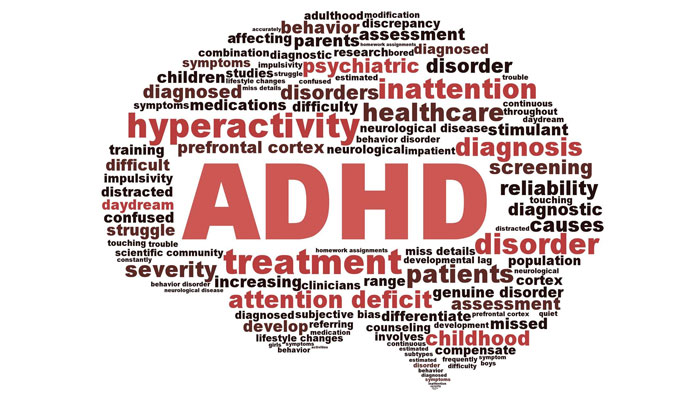ADHD, which is also known as Attention-Deficit/Hyperactivity Disorder (ADHD) is a neurodevelopmental disorder that affects millions of children and adults worldwide. It is characterized by persistent patterns of inattention, hyperactivity, hyperfixation, and impulsivity that can interfere with daily life, academic performances, decision-making, and personal relationships.
But beyond its outward symptoms, ADHD is rooted in the way the brain is wired. Understanding how ADHD affects brain function can help demystify the condition and provide insights into treatment and coping strategies.
So now for the common question, what does ADHD really do, and how does it affect the brain?
ADHD imbalances in the brain’s neurochemical dopamine, and influences ADHD behaviors.
Disruptions in certain dopamine pathways lead to attention, memory, and motivational challenges. Researchers say that pharmacological therapies for ADHD increase brain levels of dopamine.
According to www.cdc.gov, about 6 in every 10 children have moderate or severe ADHD. It is one of the most common disorders in not just children, but travels with you into adulthood.
There are a lot of different areas in which ADHD thrives in your brain, and here are some of those ways.
Inattentive: Someone with inattentive ADHD may:
- Be easily distracted
- Have trouble following directions or finishing tasks
- Have poor listening skills
- Make impulsive decisions
- Have trouble paying attention
- Make careless mistakes
- Forget things easily
- Have trouble standing still
- Have problems organizing daily tasks
- Often lose things
Hyperactivity-impulsive: Someone with hyperactivity-impulsivity may:
- Often squirm, fidget, or bounce when sitting
- Have trouble staying seated
- Not be able to play quietly with themselves
- Always be moving, such as running or climbing on things
- Talk excessively
- Have trouble waiting their turn
- Blurt out answers
- Interrupt others
Looking at these two types of ADHD, there is also a combination. A child with combined ADHD has symptoms of both inattention and hyperactivity. Combined is the most common type of ADHD, and hyperactive-impulsive is the least common type.
ADHD imbalances in the brain’s neurochemical dopamine, and influences ADHD behaviors. Disruptions in certain dopamine pathways lead to attention, memory, and motivational challenges. Researchers say that pharmacological therapies for ADHD increase brain levels of dopamine.
Dopamine is a type of neurotransmitter that acts as a chemical messenger in the brain, communicating messages between nerve cells and playing several important roles in cells. It is produced in the brain and also acts as a hormone. Dopamine is associated with feelings of pleasure, motivation, and decision-making.
ADHD can play a significant factor in relationships, causing conflict frequently. It can cause challenges like difficulty maintaining focus during conversation, forgetfulness, impulsivity, disorganization, and occasional emotional outbursts, leading to frustration, misunderstanding, and feeling ignored or undervalued by your partner.
Do you ever find yourself deeply absorbed in what you’re doing when time flies by? Maybe it’s playing an instrument, watching a show, playing a sport, reading, or learning a new skill.
For non-ADHDers, this state of flow is an enjoyable or productive way to spend time. However, for those with attention-deficit/hyperactivity disorder, periods of hyperfixation can be both a blessing and a curse.
Hyperfixation is another form of ADHD, which refers to an intense and prolonged state of focus on a particular activity or object. This may lead to happiness, satisfaction, and at times increased productivity. However, if it is not well-managed, the person may invest more time and effort than they would like to.
In a state of hyperfixation in ADHD, you become almost oblivious to the passing of time and what’s going on around you.
When you’re jolted out of focus and back into reality, you may find yourself disoriented by your surroundings, like falling out of a “trance.” It may also take a while to regain your bearings and readjust to ‘real life’.
In addition to hyperfixation in ADHD, there is also a symptom of hyperfocus.
Hyperfocus refers to intense concentration for extended periods. It is a complete commitment to completing a specific task, which can come as enjoyable to the person at hand.
Hyperfocus and hyperfixation have their similarities, but also their differences.
Hyperfixation and hyperfocus are terms used to describe intense and prolonged periods of concentration on a particular task or topic. Examples of hyperfixation include obsessively researching a topic, binge-watching a TV show, or playing video games for hours.
Hyperfocus is characterized by a deep level of engagement and productivity in a task, often leading to a sense of accomplishment and satisfaction. ADHD is often associated with hyperfixation and hyperfocus, and understanding this connection can help individuals with ADHD manages their symptoms more effectively.
Now, the opposite of the two is hyperactivity. Hyperactivity in ADHD is characterized by the inability to focus at length on a specific task. While hyperactivity is a hallmark symptom of ADHD, it is not the only symptom.
This may lead to conflict in class, at home, in sports, or when performing simple tasks because you may not be able to focus or stand still.
Recent studies show that people who show a lot of fatigue are diagnosed with ADHD. Now, fatigue isn’t an official ADHD symptom, but many people with ADHD experience it because they may do twice as much as a normal person. It is common to feel ADHD burnout, as your body eventually is worked to its limit.
Common signs of “ADHD burnout” consist of:
- Lowered productivity and poor performance at work or school
- Feeling overwhelmed, like you want to run away and escape responsibilities
- The feeling of mental fatigue and constant exhaustion
- Low self-confidence coupled with high self-criticism
- Lack of motivation and drive to complete tasks
- Anger and resentment toward responsibilities, obligations, and other people
- Irritability and mood swings
- Increased procrastination, including avoiding people, tasks, obligations
- Physical health problems associated with chronic stress
People living with ADHD also experience issues with sensory overload, which means they are much more sensitive to certain stimuli, like loud noises, bright lights, and strong smells. If you have ADHD, these sensory stimuli can be both distracting and overwhelming. Trying to focus on certain tasks or socialize in the face of overstimulation can be exhausting and cause tiredness.













